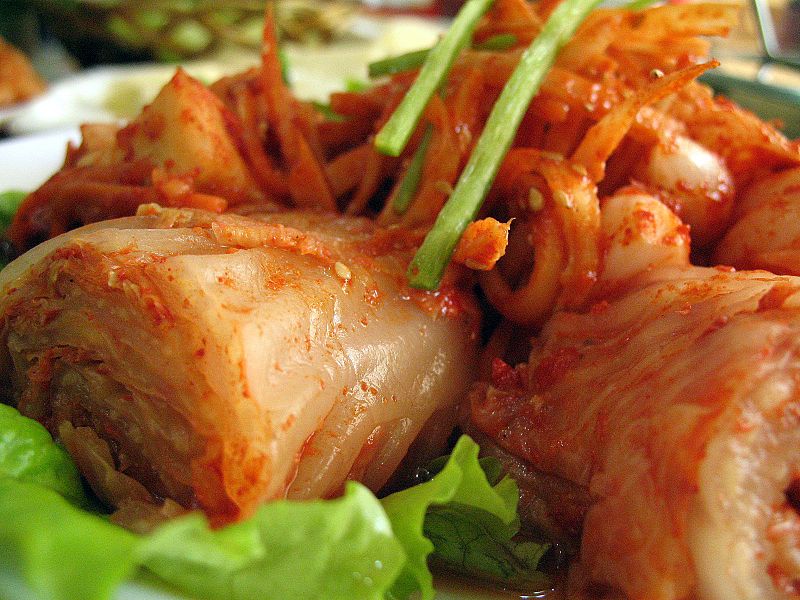
The human digestive tract contains over 400 types of microorganisms that help us digest our food and keep the bad bacteria from growing in our guts. Good bacteria, known as probiotics, can help with digestive problems, including diarrhea, bloating, gas, lactose intolerance, and irritable bowel syndrome. Despite a lack of conclusive scientific evidence for their effectiveness, many people also use probiotics to treat other health issues, ranging from inflammation, bacterial vaginosis, eczema, cholesterol, and more.
But if you want more probiotics in your diet, you don’t have to start forcing weird, unappetizing “health foods” like kombucha and kefir down your gullet. You can also forget about those fat-free, low-calorie, plain yogurts eaten in TV commercials by overly-enthusiastic middle-aged women. Spice up your life and your diet with these healthy, delicious, probiotic-filled foods that you’ll actually want to eat!
Greek Yogurt
Greek yogurt is gaining popularity over regular yogurt for a reason. The process of making yogurt starts with pasteurized milk and a probiotic bacterial culture. The milk is gently heated, allowing the good bacteria to grow and digest the sugars in the milk. This process creates whey, a watery and acidic byproduct. At this point, the yogurt’s consistency is just slightly thicker than milk. In regular yogurt, additives like gelatin or carrageenan are used to thicken the mixture; low-fat or fat-free yogurts are even more full of gelling additives. Greek yogurt, however, thickens the yogurt by straining out the whey. This means that Greek yogurt has fewer additives, is higher in protein and probiotics than regular yogurt, and is also creamier and more versatile. (Yes, Greek yogurt is also higher in fat—but it’s good fat, so relax!) Add honey and fresh fruit for a healthy breakfast, freeze it for a tasty dessert, or use it to make healthy-alternative dips and sauces.
Kimchi
This spicy fermented vegetable side-dish is a staple in the Korean diet. Once limited to the Korean peninsula, kimchi can now be found all over the world and is getting more popular all the time. Kimchi began hundreds of years ago as a bland mixture of vegetables, fermented in pots beneath the ground and eaten in winter to stay healthy. Spicy chili peppers probably weren’t added to the mixture until at least the sixteenth century, when Europeans introduced the hot pepper to Asia. Kimchi is a low-calorie food and comes in many varieties, the most popular being “baechu kimchi,” made primarily of napa cabbage and seasonings. In addition to probiotics, kimchi is also a good source of vitamins A, B, and C, as well as dietary fiber and iron. Eat kimchi in the traditional way with rice, or make a more modern dish by adding it to burgers and sandwiches.
Miso
Miso is a paste made by fermenting soybeans with a grain (typically barley or brown rice) and mixing it with salt and a fungus source. It’s a staple in Japanese cuisine and is mostly used in soups. Miso soup is popular and easy to find outside of Japan, although some people find that the flavor takes a little getting used to. Miso soup can be made as a simple broth, or you can add fresh vegetables and tofu to the mix. It has a salty flavor and is high in protein, vitamins, and minerals. Apart from soup, miso can also be used to make spreads, salad dressings, and noodle dishes.
Sauerkraut
This European dish is actually very similar to kimchi in terms of ingredients, although they taste rather different. Finely shredded cabbage is salted and left to ferment, and is traditionally served with a meat, often pork or sausage. Sauerkraut is a good source of many vitamins and nutrients, including dietary fiber, iron, calcium, and vitamins A, B, and K. It is also used as a cure for canker sores, and has been used as a treatment for ulcers for centuries. When buying sauerkraut, make sure that it’s raw and preferably organic; cooked sauerkraut won’t contain any of the lovely live bacteria that are so good for your gut. Be careful not to overindulge, though, since too much sauerkraut can cause incredibly stinky flatulence.

